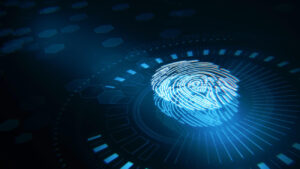Taking information about people or groups for maintaining critical security protocols and improving access-based environments is called biometric data collection. When such data is attacked through an external route, it is regarded as a biometric data breach.
Detection of pupil or retina, facial feature recognition, voice recognition, heart rate, and fingerprint scanning are carried out for assessing biometrics. This information is recorded through technology and applied to provide access, and security, and to make use of available data for authorized purposes.
What is a breach
Biometric data breaches are violations of crucial biological, morphological, and behavioral characteristics. The metrics are captured through devices and evaluated on a centralized database, more often. Contrastingly, data breaches have shocked authorities in many instances. Identity theft is a common type of biometric data breach result. In a recent case in 2015, 5.8 million fingerprints were stolen in the US defense department, wherein, hackers targeted the government systems.
Data breaches can lead to identity theft, online fraud, and many other issues for people. Such violations also raise questions about the established protocols and technologies applied, thus it is important to avoid the scenarios that make hackers powerful.
How to avoid the pitfalls of data breaches
Data breaches occur without alerts and it is a serious concern across many sectors. Some organizations such as banks are committed to securing client information for rendering banking services. For sophisticated businesses, often, the information serves for providing access and also mapping the user.
Sophisticated systems alone can’t protect against violations however, enhanced data security is the way ahead. This also includes prompt monitoring of biometric information with strong governance. Viewed as a crucial threat globally, biometrics requires more work such as the implementation and defining distributed components replacing hardware-based devices. And, ensuring security through neutral sources sans human intervention to ensure zero-intervention.
In addition, a mechanism to handle scenarios of a data breach can also provide the ability to answer global concerns. It will also help in leveling up the general data agreements, worldwide, in more detail for future applications across industries.
Conclusion
Access control or management at basic levels uses biometric data. Although, such information is secure internally. However, more sophisticated applications of biometrics would require advanced techniques to safeguard user information and prevent identity theft for building a high level of services and a technology-driven future.
The article has been published by the editorial board of the Identity Herald. For more information please visit www.identityherald.com.




